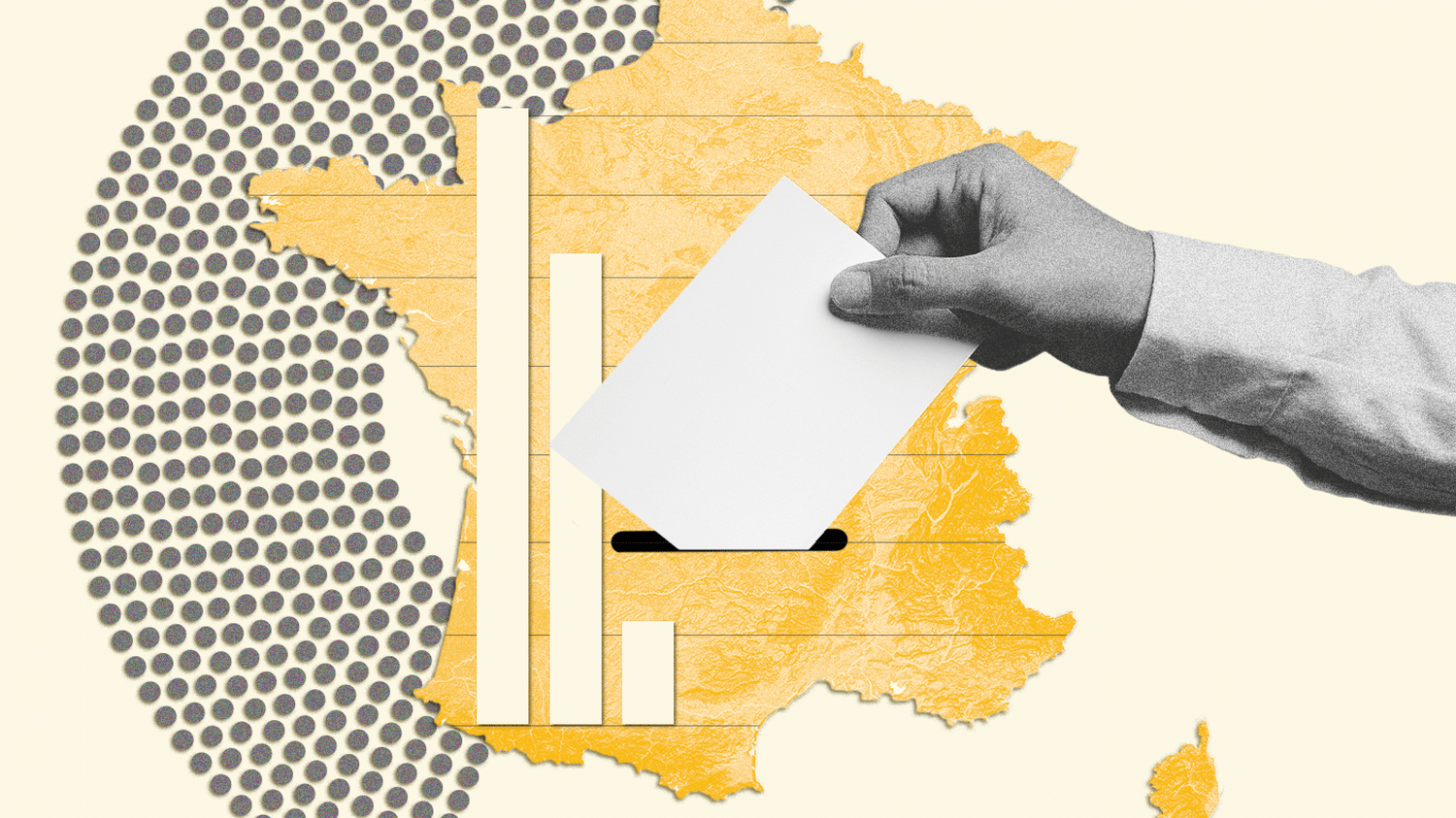More French people than in 2022 are expected to go to the polls for this early election, which could increase the number of possible triangulars in the second round.

Published
Update
Reading time: 4 min

In a political landscape disrupted since the dissolution of the National Assembly on Sunday June 9, the figure did not go unnoticed. According to data communicated on BFMTV by Gérald Darmanin, Wednesday June 19, 553,000 proxies for the early legislative elections were recorded on that date.
“The French will undoubtedly mobilize like never before for elections to elect deputies”, greeted Gérald Darmanin. The minister got a little excited, because to constitute a record, mobilization for the first round on Sunday June 30 would have to exceed the levels of 1973 (81.3% participation) or 1978 (83.2%) .
Participation could, however, reach 63%, according to a survey by the Ifop institute for The JDD, Sunday. This would correspond to a jump of more than 15 points compared to the first round of the 2022 legislative elections (47.51%). “Previously, legislative elections were systematically organized after a presidential election, many voters had the feeling of validation elections”explains Mathieu Gallard, director of studies at the Ipsos institute.
This is what is called the “majority fact”: in the legislative elections, a parliamentary majority was almost systematically granted by the French to the new President of the Republic to implement his program. “There, it’s different: there is the issue of knowing who will govern the country after the elections and whether the National Rally will come to power”, specifies Mathieu Gallard. It was the large victory of the far-right party in the European elections that caused the dissolution announced by Emmanuel Macron and the upheaval of the political landscape that followed.
The importance of the stakes for these legislative elections can therefore reduce abstention, after the European elections marked by increased participation but still deserted by almost one in two voters (48.17% abstention). Who could benefit from this anticipated increase in participation? It is still too early to know. “It could be a tie-up vote, but let’s not rule out the worst”warns a Macronist framework, which evokes “the big blur” And “the stress” support for the head of state before the election.
In the meantime, each camp hopes to attract these new voters, from the New Popular Front to the National Rally. “The increase in participation benefits us, because our electorate is rather abstentionist”wants to believe Philippe Olivier, executive of the RN. “The RN electorate was already very mobilized in the European elections, because 60% of Marine Le Pen’s voters in 2022 went to vote, compared to 54% of those of Emmanuel Macron and 53% of those of Jean-Luc Mélenchon in 2022”points on the contrary to Mathieu Gallard, which augurs greater reserves of votes on the left and in the center.
“Nothing is certain, but the rebound in participation could disadvantage the RN in the legislative elections.”
Mathieu Gallard, director of studies at the Ipsos instituteat franceinfo
Participation will in any case be closely scrutinized in each constituency, in the first round, because it can shape the contours of the second. If none of the candidates reaches the 50% mark in the first round with the votes of at least 25% of citizens registered on the electoral lists, the first two are qualified for the second round, organized on Sunday July 7. But if the third manages to gather the votes of at least 12.5% of those registered on the electoral lists (and not only the votes cast), he is also qualified for the second round. Mechanically, an increase in participation in a constituency therefore makes it possible to lower the qualification bar for the second round. With 50% participation, it is necessary to exceed 25% of the votes cast, while with 80% participation, it is “enough” to exceed 15.62%.
The number of triangulars, which correspond to second rounds with three candidates, may therefore be higher than in 2022 (eight triangulars), than in 2017 (only one), or even than in 2012 (34).
Who could benefit from these configurations? Historically, the triangulars tend to favor the National Rally because the votes of its opponents are scattered over two distinct adversaries. Even more so when the far-right bloc approaches 40%, as was the case for the European elections with the RN and Reconquest on June 9.
“But QWhat will happen in terms of withdrawals?”asks Mathieu Gallard. Between the results of the first round and the deadline for submitting lists, set for Tuesday July 2 at 6 p.m., some candidates may indeed decide to throw in the towel. Their objective is to prevent the dispersion of votes and the election of an elected RN to the National Assembly, while the party of Marine Le Pen and Jordan Bardella had 88 deputies before the dissolution.
A classic reflex between two rounds of an election, withdrawals to favor the Republican front will be observed very closely this year, with three very polarized blocs. Many leaders of the presidential camp have thus assured that they would not choose a ballot if they were faced with a second round between an RN candidate and an LFI candidate, a strategy increasingly assumed in the ranks of the majority. On the other hand, the candidates of the New Popular Front are careful not to mention their voting instructions in the event of a hasty elimination.
